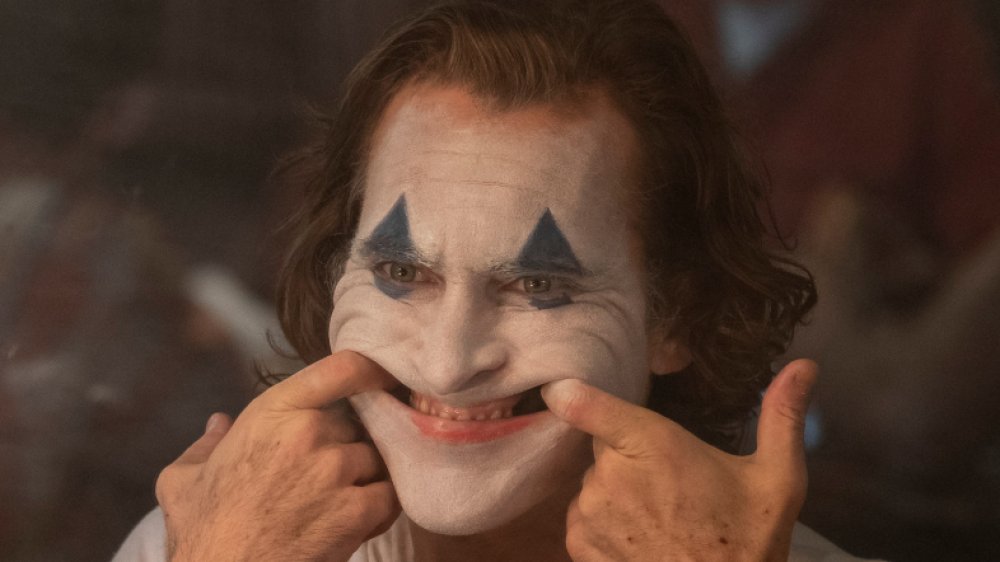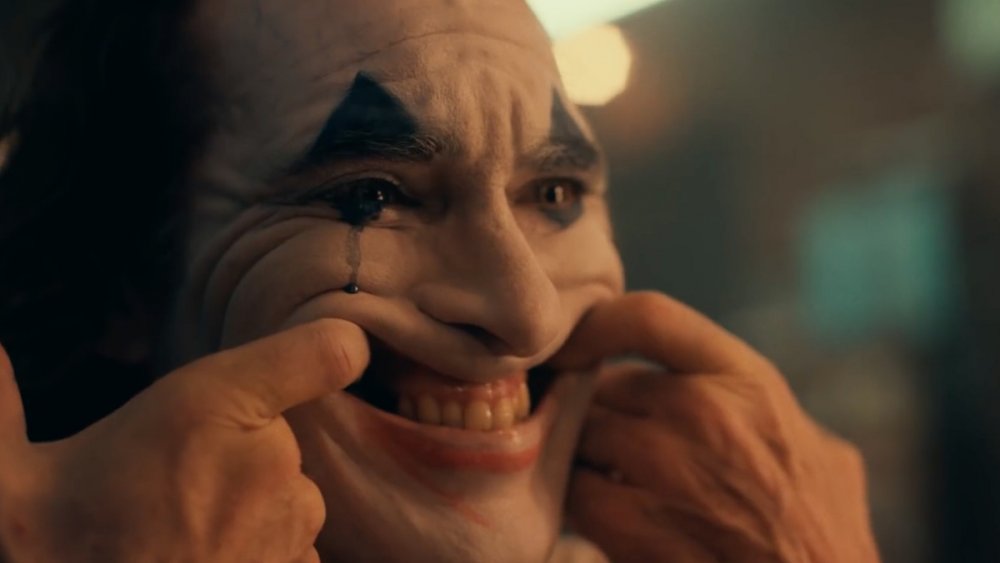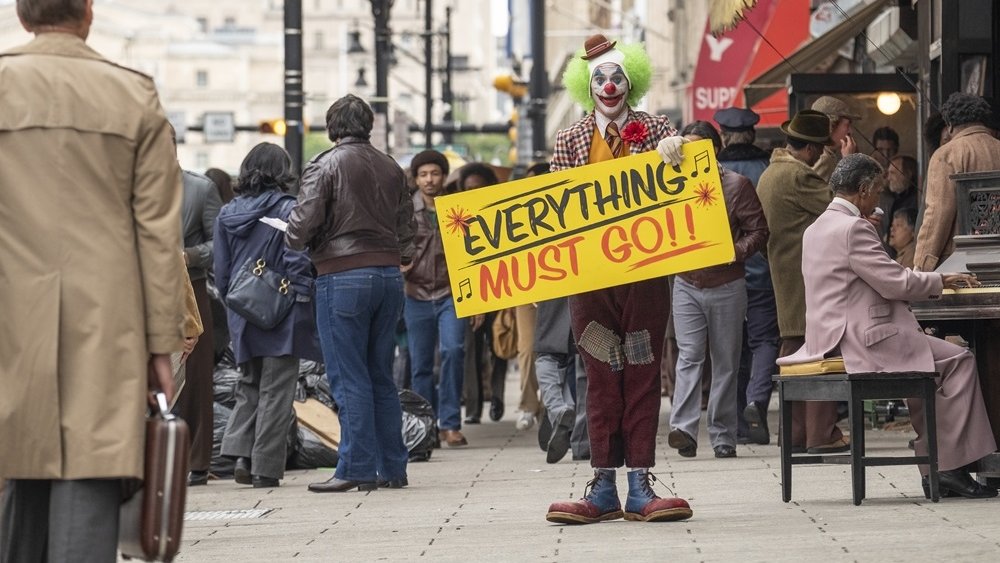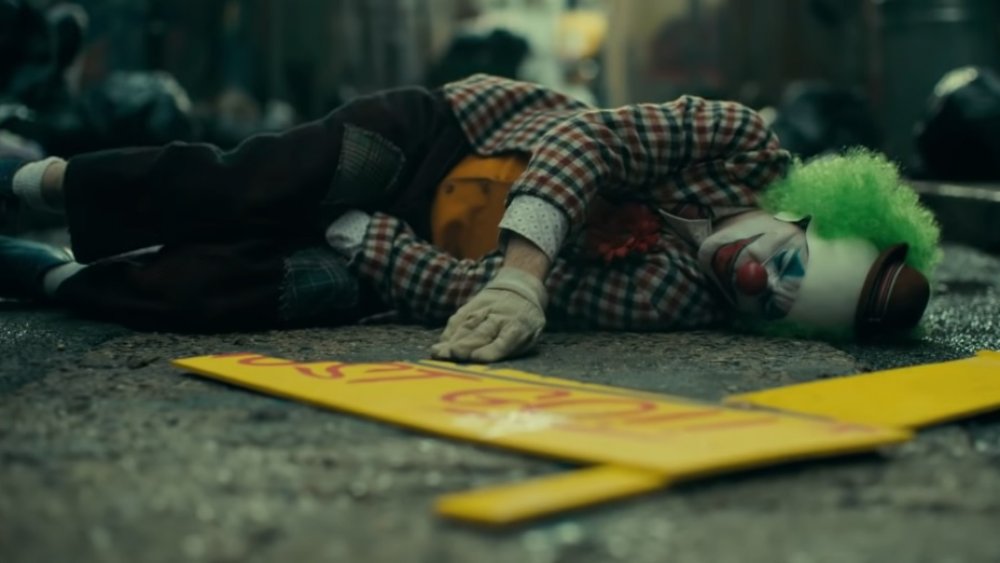Joker Director Todd Phillips Gives In-Depth Explanation Of Film's Opening Scene
Setting just the right tone for a film like Joker is no laughing matter.
In a recent video short for Vanity Fair, the movie's director Todd Phillips offered an extensive breakdown of what went into Joker's opening scene, and how he used those first few moments to establish an oppressive, unsettling atmosphere. Please be advised that minor spoilers for Joker follow.
The video offers fascinating insight into Phillips' approach to introducing Arthur Fleck, the man who will slowly but surely become the anarchic criminal mastermind known as the Joker, and how this approach was bolstered by the talents of his star, Joaquin Phoenix. In the opening moments of Joker, we see Arthur getting ready for a day on the job as a rent-a-clown; we then see a bit of how that day plays out, with Arthur suffering the first of many indignities that will hasten his transformation into the Clown Prince of Crime.
Phillips offered a wealth of details on his shooting locations, how certain shots were composed, and how the sequence was scripted to clue the audience in to certain aspects of Arthur's characterization which would become important later in the film.
Joker opening scene: Arthur getting ready for work
The first portion of Joker's opening scene takes place in a run-down loft where Arthur and several other clowns for hire are applying their makeup and preparing to hit the town. Phillips opens his commentary by stating that he considers it to be the job of a film's director to be a "purveyor of tone," and that the aspect of Joker that he's proudest of is the slow, steady escalation of its tone from merely unsettling to "insanity."
When we first see Arthur, he's in front of a mirror applying his makeup, and though we can hear voices all around him, he's very much alone in the center of the shot as the camera slowly closes in on him. Phillips says that this was absolutely intentional. "Everything in the movie is meant to be unsettling, so any time we kind of move the camera intentionally like this, it was always to give off this... vibe of this guy, who's pretty much separated from everybody else, even in this locker room space," the director said. "You hear the voices of four or five guys over here playing cards... and Arthur's here, alone, kind of not part of the group... figuring out how to keep a smile on his face."
Phillips goes on to explain that the idea of "putting on a happy face" is very much key to movie, and in this scene, Arthur is struggling mightily to do just that. As he pulls his lips up into a rictus, the camera sort of hovers behind him, giving a voyeuristic feel to the shot which Phillips says he and cinematographer Lawrence Sher employed whenever they could.
"It was really important to me and [Sher] that the movie have a handmade feel... we thought that would lend itself to the intimacy that we're trying to get with this character study of Arthur," he said. "So, you'll see in this scene [that] you can feel there's [a camera] operator there, and that's all really intentional. We also love these kind of extreme close-ups on Arthur."
As Arthur stretches his mouth into that uncomfortable-looking grin, something unexpected happens: a single tear falls from one of his eyes. Phillips explained that it was when he saw that tear that he knew he had his shot.
"That tear just happened in one take," he said. "Joaquin has a really interesting process... a lot of people always assume Joaquin would be a method actor, and people use that term loosely, but where he's lost in the part... [but] we spent half the [shoot] just laughing off set, having a good time. But he's so amazing, that's he's able to then sit down, and action gets called, and we do this slow push in... [and] this little tear appears, and we just had the scene."
Joker opening scene: The street sequence
The next part of Joker's opening scene takes place on a busy street in what Phillips refers to as "Gotham Sqaure," as Arthur — in full clown costume — is busy twirling a sign and cavorting for passersby. Phillips revealed that the scene was shot on location in Newark, New Jersey, with the storefronts made up to fit in with the flick's early '80s setting — but that for the wide establishing shot, only the foreground is actually, you know, real. The entire background, with its looming skyscrapers and cars humming back and forth in the distance, was accomplished with CGI.
Phillips then went on to explain how this scene offers a bit of insight into Arthur, who seems to be most comfortable when he's pretending to be somebody else. "This is really where Arthur is at home," he said. "He's got a mask on... and he gets lost in his work. It's also where we learn that Arthur has music in him. Something that I conveyed to Joaquin is that Arthur is a guy that has music in his soul, and that will continue when he transforms into Joker, and this is one of the visual representations of him having that music."
The director also took time to give a shout-out to Phoenix's sign-twirling abilities. "Joaquin probably practiced with this sign for about two or three days," he said. "It was more complicated than it looks."
We then reach the point in the scene where a group of young thugs steal Arthur's sign and take off running, with the hapless clown in pursuit. Phillips revealed that while Phoenix's stunt double was responsible for performing some of the "near misses" with oncoming traffic and one exaggerated slip, it was actually Phoenix who did the majority of the work in the shot for one simple reason: his distinct, plodding-yet-oddly-graceful form when running.
"There's a grace to Arthur, that if he would just let go, and take off the mask, he would find," Phillips explained. "And that's kind of what happens when he becomes Joker, ironically. It's Arthur taking off [his] mask, even though he's putting on white face paint and dyeing his hair green."
Phillips then goes on to break down how he and Sher composed this chase sequence with a shallow depth of field, with the backgrounds and extreme foregrounds appearing blurry while the shot's subjects — Arthur and his tormentors — are in sharp focus. This, he says, was done as a tribute to the gritty films of the '70s and '80s which were Joker's inspiration.
The director also explained that for certain shots during this sequence, CGI buildings were added in the background wherever there were areas — looking down an alley, for example — that appeared too open. "I wanted it to feel really oppressive, and Gotham is always over Arthur, and we just didn't love any blank spaces in the skyline, so to speak," he said.
Arthur pursues the youths into an alley, where one surprises him by hitting him square in the face with his sign, which shatters. Arthur collapses to the ground, and the group of thugs immediately set in on him, kicking the crap out of him as he lays huddled in the fetal position. One shot during this sequence is an overhead view at a skewed angle, and Phillips explained that this was one of the few shots in the movie for which he took inspiration directly from the comics.
"This shot is very particular, because [Sher] and I felt early on — and we don't do this a lot in the movie — we wanted the frame to feel [like it was] out of a graphic novel," Phillips explained. "We don't do this [type of] framing a ton... it's not a normal, necessarily, movie angle, to me it feels very graphic novel... that was an important shot for us to get."
Joker opening scene: The final shot
Satisfied that Arthur has received a sufficient beating, the thugs run off — and we now arrive at a shot that Phillips calls one of his favorite in the entire film. Arthur reaches for the broken pieces of his sign before seeming to realize the futility of trying to salvage it; then, he rolls over onto his back, reaches inside his jacket, and pushes a hidden button that causes water to squirt from the flower pinned to his lapel.
"Really, the most important part of this shot... first, he's trying to reach for the sign, like, 'Maybe I can still fix this.' And then he rolls over, and he pushes that little button, and the water comes out of the flower. Because, what we're saying there... is, he's still Joker. He's still there to make people laugh, he's still seeing comedy in this moment of pain."
Phillips concluded by saying that with every aspect of his film, right down to the design of the titles and the technique used to render them, he "wanted this movie to feel like it could've come out in the summer of 1979," and he wrapped up with some glowing praise for the work of his star.
"Joaquin's performance is so nuanced, so as he shifts from Arthur to Joker, it's not like Clark Kent walking into a phone booth, and he comes out, and he's Superman," the director said. "[His transformation] is something that happens over two hours, and when you rewatch the film, I think you really get an appreciation for the work that Joaquin did to slowly turn that dial up [for] the whole movie. And I just tried to match it with our directing style."
Phillips appears to have done his job. Joker is the most talked-about film of the fall, winner of the Golden Lion at the Venice film festival, the subject of intense Oscar buzz, and it contains what may be the greatest performance in the illustrious career of one of the finest actors of his generation. It's a film that's likely to be discussed for years to come, and it's fascinating to know just how much thought and planning went into its first few minutes alone.



